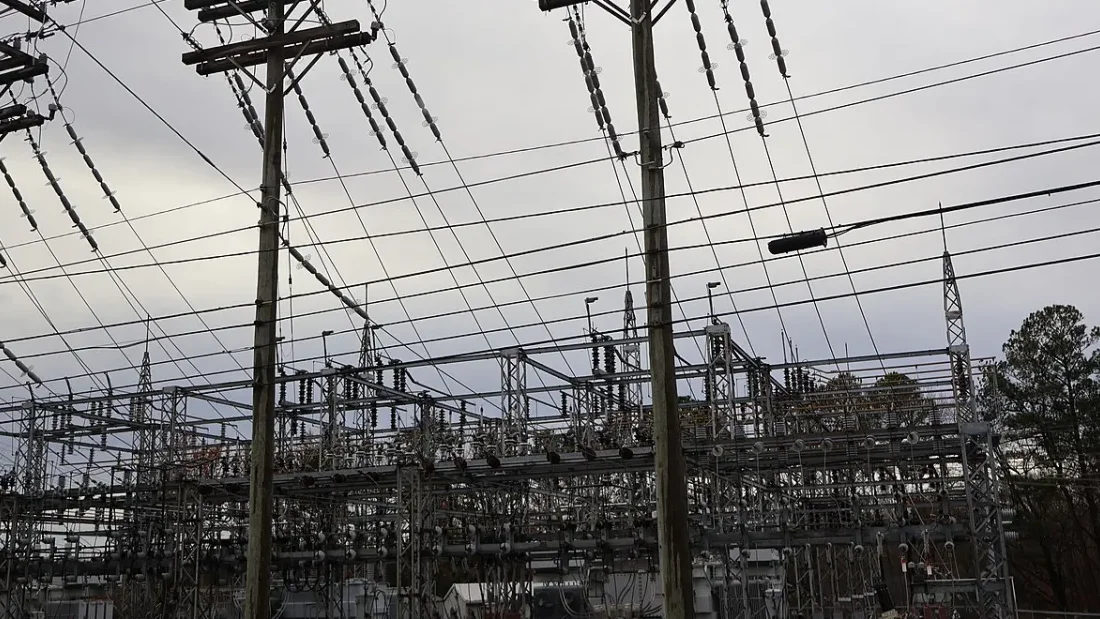
GRID: A new ranking of grid operators says California and Texas have the best interconnection processes, with PJM Interconnection and ISO New England ranking last. (Utility Dive)
ALSO: Environmental groups say a proposal from grid operator Southwest Power Pool unfairly values renewable energy and storage compared to gas, coal and nuclear power. (E&E News, subscription)
OIL & GAS:
CLIMATE:
UTILITIES: The federal government considers suing PacifiCorp in an effort to recover nearly $1 billion in costs related to 2020 wildfires in southern Oregon and northern California. (Associated Press)
WIND: U.S. lawmakers from California urge the Biden administration to extend a proposed marine sanctuary off the state’s central coast even though it could hamper offshore wind development. (Tribune)
EFFICIENCY: A new weatherization jobs resource hub in Wisconsin is part of advocates’ effort to avoid the boom-and-bust cycle that followed previous increases in federal energy efficiency funding. (Energy News Network)
CLEAN ENERGY:
POLITICS: A conservative group’s blueprint for a Republican presidency aims to severely weaken the EPA and put more authority in the hands of political appointees rather than scientists. (E&E News)
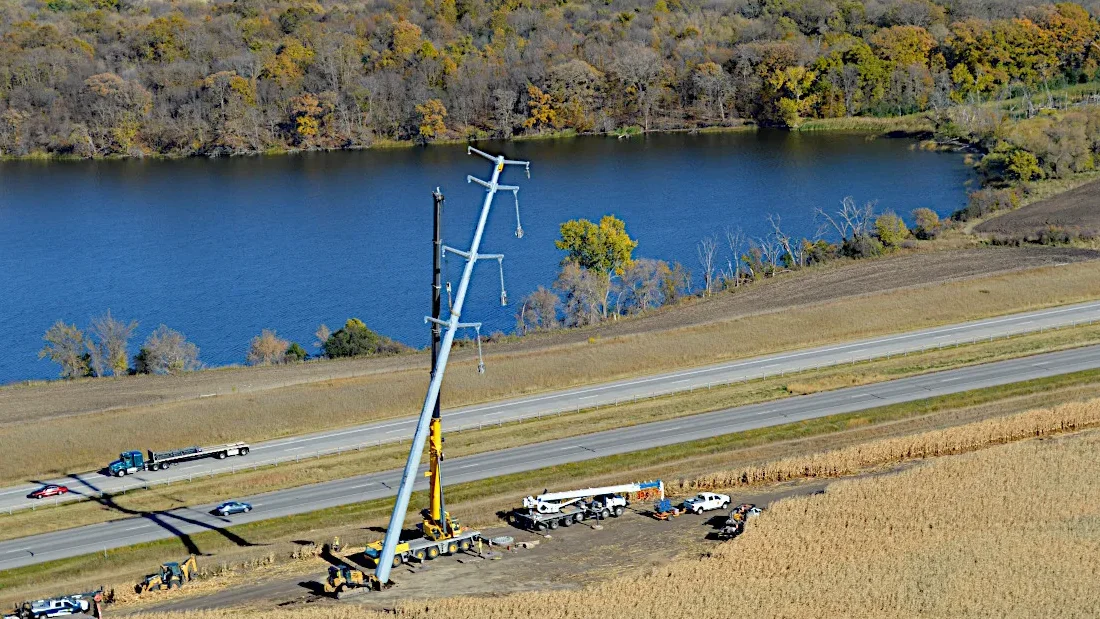
A coalition of labor and environmental groups is putting its support behind perennial Minnesota legislation meant to lift a barrier to building power lines in the rights-of-way of federal highways in the state.
NextGen Highways is a national collaboration that promotes co-location of utility infrastructure in existing highway corridors as a way to accelerate expansion of the electric grid.
The concept has widespread public support, according to the group’s polling, but it also faces various legal, financial, and technical obstacles across the country.
“What we’re trying to do in Minnesota — and in states across the country — is to identify barriers and work with our coalition partners to develop strategies to overcome those barriers,” said Randy Satterfield, executive director of NextGen Highways.
One example in Minnesota is a state law requiring the Minnesota Department of Transportation to pay utilities if they are forced to move any assets, such as poles or towers, in federal highway rights-of-way. A pair of bills (House Bill 3900, Senate Bill 3949) would shift those costs to utilities instead, making it consistent with existing rules for state highway corridors.
Without that change, the state won’t allow transmission projects to be built in its portion of federal highway rights-of-way. State transportation officials have proposed such legislation multiple times since 2012, but the bills have never succeeded amid opposition from utilities.
Many transmission projects already follow highway corridors, Satterfield said. They include several announced last year by MISO, the Midcontinent Independent System Operator, Inc. Three of those projects cover portions of Minnesota and follow highways for parts of their routes.
Not all transmission lines that share routes with highways are located within the public right-of-way. Some are built on adjacent private property instead, which still requires negotiations with hundreds of individual owners. When developers have the option of placing towers or burying lines within the public right-of-way, it can significantly streamline a project.
With clean energy’s escalating growth trajectory, more solar and wind developers will request permission to build projects and power lines in rural communities, Satterfield predicted.
“I think we owe it to (communities) to at least consider utilizing existing linear infrastructure, like highways and interstates, for the transmission infrastructure,” he said.
Still, transmission developers wanting to take these routes often run into obstacles. Many state departments of transportation still recall a federal restriction, since rescinded, that did not allow transmission in federal highway rights-of-way, he said. Other states have no culture of allowing highway rights-of-way to co-locate with transmission.
NextGen Highways formed to advocate for transmission in highway corridors and to encourage states to remove any barriers to that goal. Minnesota is the first state where it has launched a state coalition to advance the concept.
“Transmission congestion is the biggest hurdle that we have to overcome to reach our 100% energy goals and to get more renewables and other forms of energy on the grid,” said George Damian, government affairs director for Clean Energy Economy Minnesota, a nonprofit that is part of the coalition. “This is a kind of a low-hanging fruit. These rights-of-way owned by the state can be utilized for transmission.”
Utilities, lawmakers and stakeholders continue to discuss the legislation. Theo Keith, Xcel Energy’s spokesperson, said the utility has been “encouraged by the early conversations we’ve had with lawmakers and other stakeholders.” Xcel has proposed hundreds of miles of transmission lines in road corridors and often shares easements with the transportation department, he said.
Keith cited the CapX2020 project as an example of Xcel and other utilities building a major transmission corridor adjacent to the Interstate 94 right-of-way.
“Building new transmission lines is critical to meeting our clean energy goals and those of the states in which we operate, including Minnesota’s 2040 benchmark,” he said.
Minnesota can look to its neighbor in Wisconsin for an example of how highway corridors could be used for transmission. That state passed a law 20 years ago to make federal and state highway rights-of-way a priority for siting transmission. Satterfield, who once worked for a transmission company in Wisconsin, said the state’s utilities built more than 200 miles of transmission projects on federal highways.
Wisconsin did not ask utilities to move poles or other assets on any of the projects, he said. Wisconsin’s Department of Transportation coordinates and plans projects with utilities to avoid potential problems, such as highway lane expansion that could encroach on transmission lines.
In addition to changing the Minnesota statute on utility colocation on federal roads, the NexGen Highway Coalition wants the Legislature to consider a siting priorities law. The law requires utilities to consider existing transportation corridors, such as highways and railways, before opting for greenfield development.
Minnesota Department of Transportation Strategic Partnerships Director Jessica Oh said the agency had put forth five to six legislative proposals since 2012 to repeal the language in the statute regarding utility infrastructure near federal highways and will support continued efforts. Utilities opposed the measure because of the additional expense they might incur in projects, she said.
A change to the state law was also suggested in a report to the legislature based on permitting reform discussions held by the Public Utilities Commission, she said.
In studying Wisconsin’s experience, the department learned the importance of early coordination with clean energy developers and utilities “is key to the success of the whole process.” Minnesota transportation staff have conducted early planning sessions involving aerial encroachments on state highways with utility partners.
Oh said the department’s “highest concern” around utility infrastructure has always been safety. Should the legislation pass, the transportation department will continue to work closely with utilities, especially since power lines will become instrumental in moving electric vehicles on highways.
Oh added Minnesota is among 11 states selected by the American Association of State Highway and Transportation Officials and the Transportation Research Board’s National Cooperative Highway Research Program for a “moonshots” program for state departments of transportation. Oh leads the initiative in Minnesota to co-locate more transmission and broadband in highway corridors.
“We have a stake in this because of the electrification of transportation,” Oh said. “I tend to think our fates are intertwined in energy and transportation.”
Great Plains Institute convenes NextGen Highways, which partners with the Center for Rural Affairs, Clean Energy Economy Minnesota, Conservative Energy Forum, Fresh Energy, Laborers’ International Union of North America-Minnesota and North Dakota, Mechanical Contractors Association, Minnesota Center for Environmental Advocacy and the National Audubon Society.
Fresh Energy publishes Energy News Network.
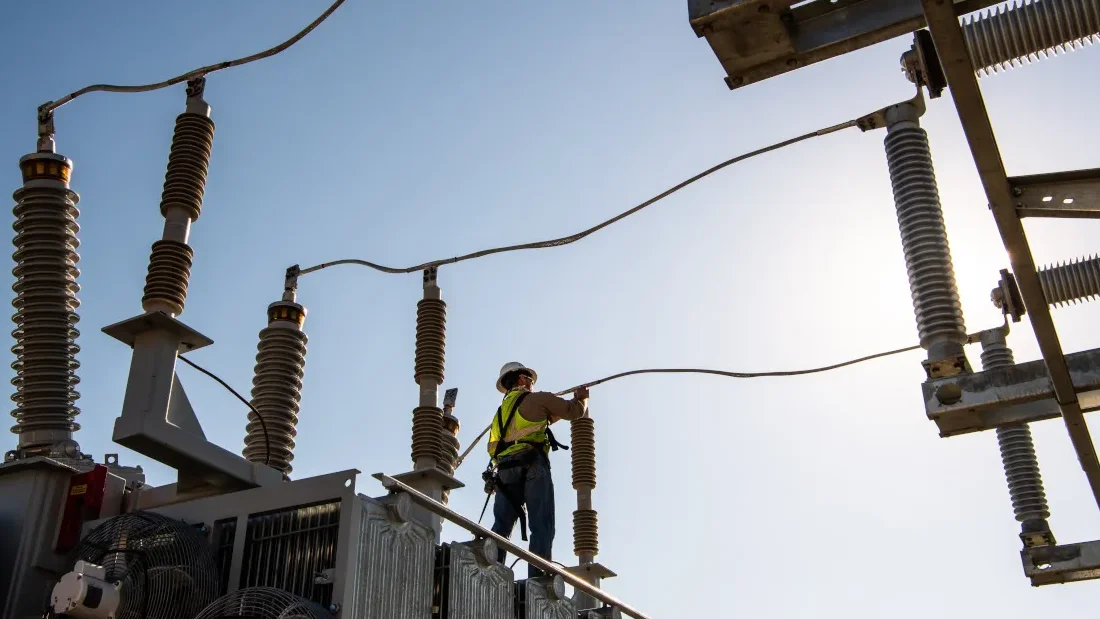
STORAGE: Georgia Power prepares to begin operation of a 65 MW battery storage system in Georgia, the first in a series of battery installations planned to eventually total 915 MW. (Macon Telegraph)
NUCLEAR: A Southeast trade association says the nuclear industry’s $9.8 billion footprint in Tennessee means the state will lead a pending “nuclear renaissance” in the region as utilities consider building a wave of new plants. (Knoxville News-Sentinel)
TRANSITION:
SOLAR:
WIND: Wind energy company Enel considers whether to appeal, negotiate with tribes or remove its 48-turbine wind farm in Oklahoma after a judge found the company failed to secure mineral rights from the Osage Nation. (Engineering News-Record)
ELECTRIC VEHICLES: Kentucky breaks ground on the first of 40 electric vehicle charging stations planned for the state’s interstates and highways. (Spectrum News, WHAS)
EMISSIONS: An analysis finds oil and gas producers would have owed as much as $1.1 billion, largely from leaky well and pipeline infrastructure, had a new federal methane fee been in place for a one-year period ending in March 2023. (Grist)
UTILITIES: Duke Energy revises its long-term plan in North Carolina to reflect an “unprecedented” increase in power demand by adding more solar and offshore wind, but also new natural gas-fired power plants and experiments in nuclear power. (Wilmington StarNews)
OIL & GAS: West Virginia lawmakers complain about miscalculations that cost eight counties a total of $22.9 million as they advance legislation to make permanent a relatively new method for assessing tax valuations for oil and gas properties. (WV Metro News)
RENEWABLES: A Spanish company secures $200 million in financing to build out 1.9 GW of solar, storage and wind facilities on Texas’ standalone power grid. (PV Tech)
COAL: A creditor of West Virginia Gov. Jim Justice’s coal companies joins a legal dispute between those companies and a Virginia bank over $226.2 million plus interest in debt payments. (Cardinal News)
COMMENTARY: An analyst at a conservative think tank complains that net-metering subsidizes homeowners with rooftop solar at the expense of other utility customers. (Carolina Journal)

HYDROPOWER: Environmentalists and legislators from Pennsylvania’s York and Lancaster counties come together to oppose the $2.3 billion Cuffs Run hydroelectric project, citing economic, ecological and cultural concerns. (York Dispatch, WITF)
POLICY:
FINANCE:
SOLAR:
EMISSIONS: Residents of Pennsylvania’s Mon Valley wait to see how much of a difference the latest legal settlement with the highly air-polluting Clairton Coke Works will make in their lives. (Public Source)
OFFSHORE WIND:
TRANSIT:
FLOODING:

STORAGE: Nearly a quarter of the world’s battery storage systems have defects related to fire detection and suppression, an advisory firm estimates. (Utility Dive)
OFFSHORE WIND:
OIL & GAS:
PIPELINES: The FBI began tracking Native American opponents of the Keystone XL pipeline as early as 2012 as part of a sweeping law enforcement strategy to counter civil disobedience aimed at fossil fuels. (Grist)
ELECTRIC VEHICLES: Consultants trace Republican opposition to electric vehicles back to the early 2010s, when the federal government first offered EV companies loans to get off the ground. (E&E News)
CLIMATE:
SOLAR: A company encourages Black farmers in the Southeast to lease some of their property for solar projects to add a new source of income. (Civil Eats)
CLEAN ENERGY:
GEOTHERMAL: The Biden administration awards $60 million to three enhanced geothermal energy pilot projects in California, Utah and Oregon. (The Hill)

Nine states just made a big electrification commitment: They want electric heat pumps to make up 90% of their residential heating, air conditioning and water heating sales by 2040.
Officials in California, Colorado, Maine, Maryland, Massachusetts, New Jersey, New York, Oregon and Rhode Island signed on to the agreement last week. And while it’s legally nonbinding and the states haven’t set aside any funding to achieve the goal, it’s a step toward making heat pumps the norm for homeowners when they install new HVAC equipment.
The residential sector is a big contributor to U.S. greenhouse gas emissions, especially in cold Northeastern states that heavily rely on fossil fuels for heating. Heat pumps meanwhile use electricity to both heat and cool homes, and while much of that electricity may come from fossil fuels for now, they use that power far more efficiently than gas boilers. They also help keep natural gas and its health and safety risks out of homes.
And if you’ve got questions about just how well electricity can heat a home, this study from 2022 shows heat pumps kept Maine residents cozy even when temperatures dropped below freezing. It’s a big goal, but another record year for heat pump sales suggests it’s within reach. An industry group reported the electric appliances outsold natural gas furnaces by 21% in 2023, marking the second year in a row that heat pumps have outsold gas.
🏭 Cutting soot, saving lives: The U.S. EPA is tightening airborne soot regulations to reduce coal plant and diesel truck pollution, a move expected to save as many as 4,500 lives in 2032 and bring $46 billion in health benefits by that year. (E&E News)
Read more: Air quality monitoring data suggests Arizona, California, Pennsylvania and Texas will have the hardest time meeting the new soot limits, though 99% of counties will likely comply with the rules by 2032. (E&E News, Utility Dive)
📈 The IRA’s price tag is growing: The estimated cost of implementing the federal climate law has more than doubled since its passage in 2022, largely because forecasters think its clean energy, electric vehicle and other incentives will be more popular than originally expected. (The Hill)
🚨 ‘Dangerous greenwashing scheme’: Democratic senators call on federal regulators to crack down on “responsible” and “certified” natural gas claims, saying the selling of low-emissions methane is a “dangerous greenwashing scheme” that undermines the clean energy transition. (The Guardian)
💧 Keeping hydrogen clean: As some developers look to weaken proposed rules for federal clean hydrogen tax credits, environmental advocates warn that could divert existing clean energy generation to hydrogen production and prolong fossil-fuel-fired generators. (Energy News Network)
🏫 Stolen lands’ legacies: State trust lands taken 150 years ago from Indigenous territories in Western and Midwest states provide public universities with millions of dollars of annual funding, largely via oil and gas drilling. (Grist)
🚚 Long road ahead: Waning interest in Ford’s F-150 electric truck reflects a broader cooling market for electric vehicle sales, though experts still predict long-term demand to grow. (New York Times, NPR)
🌎 Climate rights: Several states are considering amending their constitutions to guarantee residents’ right to a safe climate amid a nationwide campaign by environmental advocates. (The Hill)
☑️ Voting for clean energy: The World Resources Institute says the 2024 presidential election will perhaps be the biggest driver of the U.S. clean energy sector’s near-term future. (Utility Dive)
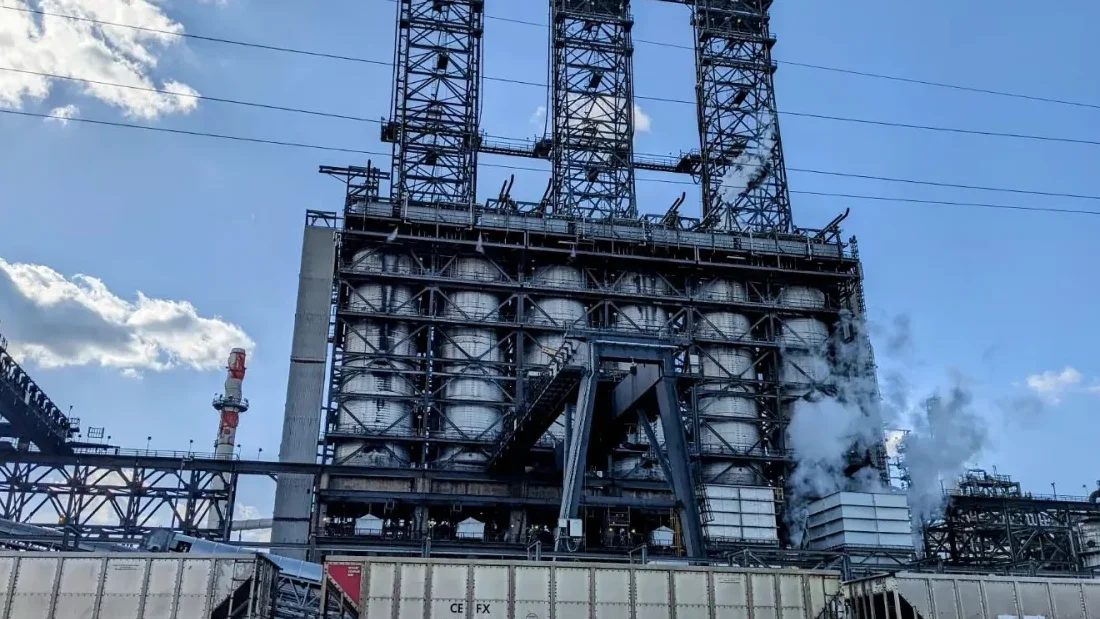
CLEAN ENERGY: The federal government is looking for carbon-free electricity to power defense and other government facilities in what could be one of the administration’s biggest clean energy procurements. (Axios)
ALSO: The World Resources Institute says the 2024 presidential election will perhaps be the biggest driver of the U.S. clean energy sector’s near-term future. (Utility Dive)
ELECTRIC VEHICLES:
OIL & GAS: California regulators propose to stop issuing new permits for hydraulic fracturing and other oil and gas well stimulation treatments in a move that would eventually phase out fracking statewide. (Courthouse News)
ENVIRONMENTAL JUSTICE:
CARBON CAPTURE: Efforts to pay farmers for sequestering carbon in their soil are hampered by questions over just how much carbon dirt can store. (Grist)
OVERSIGHT: President Biden officially makes Willie Phillips the chair of the Federal Energy Regulatory Commission, while FERC member Allison Clements says she won’t return when her current term expires. (The Hill, Politico)
TRANSPORTATION:
NUCLEAR: Federal money could boost efforts by Michigan and other states to restart or keep aging nuclear power plants operating as a source of carbon-free electricity. (Stateline)
GRID: Western utilities consider competing options for establishing a regional transmission organization. (E&E News)
SOLAR:
COMMENTARY: The Biden administration’s pause on new LNG export approvals won’t stop a massive buildout already in progress, an energy professor writes. (The Conversation)

Environmental agencies in nine states will work together to reduce planet-warming carbon emissions by making electric heat pumps the norm for most new home HVAC equipment sales by 2040.
The memorandum of understanding, spearheaded by the inter-agency nonprofit Northeast States for Coordinated Air Use Management, or NESCAUM, was released today and signed by officials in California, Colorado, Maine, Maryland, Massachusetts, New Jersey, New York, Oregon and Rhode Island.
While it is not legally binding and does not commit particular funding, the agreement calls for heat pumps to make up 90% of residential heating, air conditioning and water heating sales in these states by 2040.
An interim goal of 65% by 2030 is based on last fall’s target from the U.S. Climate Alliance, a group of 25 governors, to quadruple their states’ heat pump installations to 20 million in the same timeframe.
The residential sector is one of the top two or three contributors to greenhouse gas emissions in most of the East Coast states signing on to the agreement, driven in part by cold climates and a heavy reliance on oil and gas for home heating. Residential emissions rank far lower in the Western states participating.
In a press release, NESCAUM emphasized the harmful smog, haze and ozone driven by nitrogen oxide and particulate emissions from fossil fuel combustion, calling buildings “a hidden source of air pollution.”
Senior policy advisor Emily Levin said states must move quickly to help residents replace these fossil-fired HVAC and water heating systems with heat pumps in time to limit the harms of global warming.
“You may only have one more crack at these buildings between now and 2050, because these are long-lived pieces of equipment — they can last 10 or 20 years,” she said. “So we really can’t miss our opportunity.”
Matt Casale, senior manager of market transformation with the Building Decarbonization Coalition, said the new agreement’s market-share approach adds specificity to how states will meet existing, number-based goals for heat pump installations.
“The idea is to send a clear signal to the market that heat pumps are the future of home heating and cooling, while reflecting the urgency with which we need to act to meet GHG emissions reduction targets,” he said.
Manufacturers have called for this kind of “long-term signal,” said Levin — “they need to plan, they need to make significant investments.” She said agreements like this show companies that “this is the direction we need to go in” and that state governments are committed to helping make the transition happen.
“Greater demand for heat pumps will also put pressure on installers,” Casale added. “We will need policies that both grow and further develop the workforce. The MOU is a great opportunity to bring them in more directly, learn from them, and talk about their needs.”
Under the new agreement, participating states will “collaborate to collect market data, track progress, and develop an action plan within a year to support the widespread electrification of residential buildings,” according to NESCAUM.
Afton Vigue, a spokesperson for the Maine Governor’s Energy Office, said taking advantage of consolidated industry data will help prevent another new reporting requirement for participating states and will help align with varying state metrics.
The states’ forthcoming action plan is expected to include emphasis on workforce development and supply chain constraints, which have tempered otherwise strong heat pump progress in states like Maine.
“It really does focus on that element of driving the market and collaborating with manufacturers,” Levin said. “Right now, states don’t really necessarily know … how their heat pump market is developing. Creating systems to bring visibility to that, provide insights into that … it’s a really important element.”
The agreement tees up annual reports on each state’s progress toward the 2030 and 2040 goals, and schedules a 2028 check-in about any necessary adjustments.
“A greater focus on consumer education, workforce development, and affordability will be critical to the success of the transition,” said Casale. “This means getting the most out of the Inflation Reduction Act and other incentive programs, but we also need to answer the questions of how this solution best serves multi-family buildings, renters and others for whom purchasing a new system isn’t entirely within their control.”
In the agreement, the states pledge to put at least 40% of energy efficiency and electrification investments toward disadvantaged communities — those facing high energy cost burdens or disproportionate pollution — in line with the federal Justice40 program, which underlies similar rules for the IRA.
Working through NESCAUM and other existing groups, the participating states will brainstorm tools for reaching these goals, potentially including funding for whole-home retrofits, building code enforcement and other uniform standards, data collection, research projects, use of federal resources and more.
“It’s going to look a little different in every state,” Levin said. “But they’re committing to collaborate and to advance a set of policies and programs that work for their state to accomplish those broader goals.”
This could include adapting or building on each other’s approaches. Levin highlighted Maine and California as having successful models for consumer outreach and heat pump market coordination, and said Maryland has shown strong impact and ambition around clean building performance standards.
Maine, which relies more on heating oil than any other state, is among the participants with existing heat pump goals in their climate plans. The state surpassed an initial target — 100,000 installations by 2025 — last year, and now aims to install 175,000 more heat pumps by 2027.
Officials in Maine have said that heating oil use appears to be slowly falling in concert with increasing use of electricity for home heat. Vigue said the new agreement lines up with existing state goals and will help Maine “bolster our ongoing collaboration with other states, share experiences, and see where gaps may exist.”

Member towns in New Hampshire’s year-old Community Power Coalition are reaping the benefits of banding together to buy electricity on their own.
As of Feb. 1, residential and small commercial customers in the coalition’s 16 active member communities will pay a base electricity rate of 8.1 cents per kilowatt-hour, a 26% reduction from their already-competitive rate of 10.9 cents per kWh.
Another 29 communities are planning to enjoy the lower rate after they launch their own programs this spring, effectively making the statewide coalition the second-largest electrical supplier in the state.
“The community power program has been a great success,” said Jackson Kaspari, resilience manager for the city of Dover and a member of the coalition’s board of directors. Since Dover launched its program last October, for example, residential and commercial customers have saved an estimated $500,000, he said.
The new rate, which will be in effect through July 31, is lower than the default residential rate offered by every other electric utility in the state: 24% below Unitil, 20% below the New Hampshire Electric Co-op, 17% below Liberty, and 2% below Eversource.
The estimated savings for customers in all member communities for the next six-month rate period is around $3.2 million, said Brian Callnan, the coalition’s first chief executive officer, and formerly the vice president of power resources and access at the New Hampshire Electric Co-op.
New Hampshire’s community power law, signed into law in 2019, authorizes municipalities to procure their own power, instead of buying it through their local distribution company. The distribution companies continue to deliver the electricity and handle billing.
The coalition uses the collective buying power of all of their residents and businesses to secure competitive rates in the wholesale market. Their ability to be flexible in the timing of energy procurements enables them to find value, Callnan said.
“We don’t have to purchase power at a given time period,” he said. In contrast, “the investor-owned utilities don’t have that flexibility” in their regulated procurement process.
The coalition’s base rate — called the Granite Basic — includes 24.3% renewable content, the minimum required under the state’s renewable portfolio standard. But customers may choose to pay slightly higher rates for greater proportions of renewable power.
Opting up to the highest level — the Clean 100, with 100% renewable power — would still only raise the average residential customer’s bill an estimated $29 a month over the basic rate, while eliminating more than two tons of carbon emissions per year, according to John Tabor, chair councilor of the Portsmouth Energy Advisory Committee.
“Portsmouth Community Power customers could reduce their carbon footprint from electricity the same as if they converted their homes to solar panels, at a fraction of the cost,” Tabor said in a statement released at the time of the new rate announcement.
Currently, about 90% of customers have chosen to stay with the Granite Basic product, Callnan said.
The revenue from electricity sales cover the nonprofit coalition’s operating costs, with the balance going into reserves. Every member community is allocated their portion of the collected reserves in the nonprofit. Member communities will also have an opportunity to create a reserve fund on their own to pursue other energy-related projects in their towns, such as improving building efficiency or developing solar projects.
The coalition could potentially partner with a community hosting a solar project and take up some of that power, he said.
“Pretty much all the communities have ideas for projects or are working on projects,” Callnan said. “To me, that’s the exciting part of this — we can really make an impact on how a community uses energy. There are no renewable projects under development from within our communities right now, but we could see that happen in 2025.”
Dover’s energy commission is considering a multi-phased program to improve energy efficiency in their municipal buildings, Kaspari said. They have also evaluated some sites for building solar, such as at the city’s wastewater treatment facility, he said.
“Being a member of the coalition has given us new perspectives on a lot of things and opened the door for information sharing with other municipalities,” Kaspari said. “That’s one of the most powerful aspects of the coalition at this time — leaders in the energy sector talking to each other from across the state.”
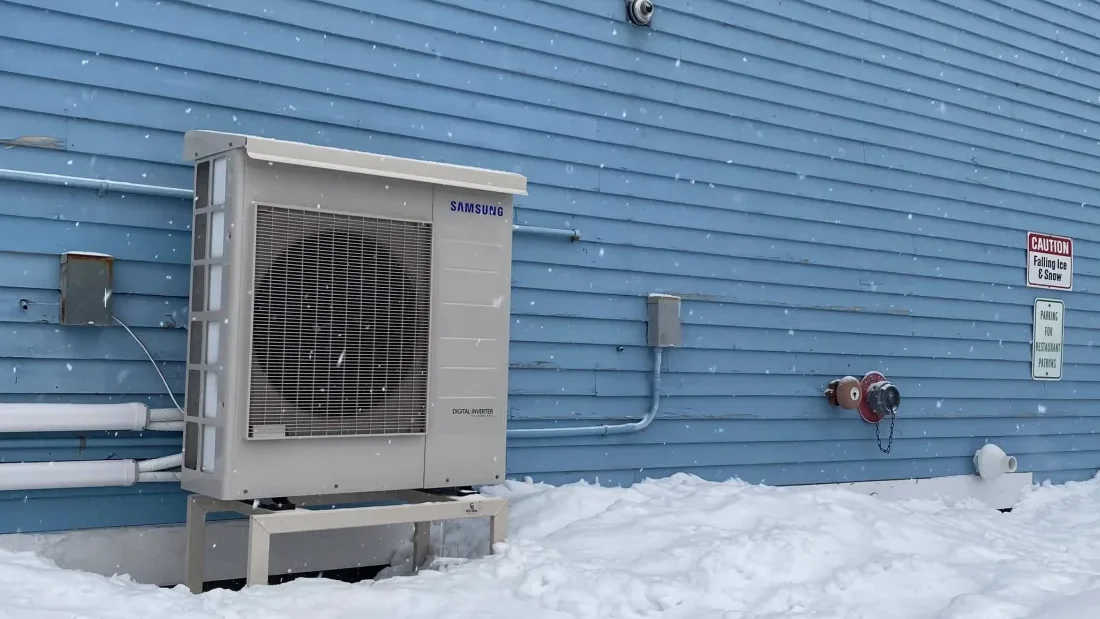
ELECTRIFICATION: Chicago Mayor Brandon Johnson plans to introduce an ordinance this week that would ban natural gas hookups in new buildings and homes, a climate strategy facing pushback from a powerful local union. (Sun-Times)
OIL & GAS: Ohio environmental groups are challenging a state commission’s claims that its decisions to allow oil and gas drilling in state parks and wildlife areas can’t be appealed in court. (Energy News Network)
SOLAR:
HYDROGEN: At a mini-village project site in Ohio, Dominion Energy is testing the potential of blending hydrogen and natural gas for appliances. (Spectrum News)
GRID: Federal regulators reject a proposed cap on MISO’s interconnection queue, saying it could hurt the grid operator’s ability to cover potential short-term supply shortfalls. (Utility Dive)
PIPELINES:
OIL & GAS: North Dakota officials estimate that as much as 700,000 barrels of oil production per day was lost over last week during historically low temperatures. (KFYR)
NUCLEAR: The University of Illinois hopes to secure funding and approval to build an on-campus nuclear reactor that would be allowed under a new state law lifting the state’s moratorium on nuclear construction. (Crain’s Chicago Business, subscription)
RENEWABLES: An Illinois Republican proposes a bill allowing counties to reinstate local wind and solar restrictions that were nullified under a 2023 law establishing statewide siting standards. (Ford County Chronicle)
BIOFUELS: The South Dakota Senate unanimously passes a bill allowing gas stations to claim a fuel tax refund of up to 5 cents per gallon of ethanol sold. (South Dakota Searchlight)